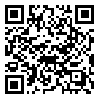Volume 9, Issue 4 (Winter 2023)
DSME 2023, 9(4): 8-11 |
Back to browse issues page
Download citation:
BibTeX | RIS | EndNote | Medlars | ProCite | Reference Manager | RefWorks
Send citation to:



BibTeX | RIS | EndNote | Medlars | ProCite | Reference Manager | RefWorks
Send citation to:
Khazaei A H, Haradasht S A, Shahraki M. Artificial Intelligence and Dental Education in Iran: Current Situation and Challenges. DSME 2023; 9 (4) :8-11
URL: http://dsme.hums.ac.ir/article-1-394-en.html
URL: http://dsme.hums.ac.ir/article-1-394-en.html
Department of Dentistry, School of Dentistry, Zahedan University of Medical Sciences, Zahedan, Iran.
Full-Text [PDF 1275 kb]
(1029 Downloads)
| Abstract (HTML) (2096 Views)
Full-Text: (2152 Views)
Recently, artificial intelligence (AI) has attracted the attention of many scholars in the world, especially during the COVID-19 pandemic [1]. Artificial intelligence can be an integral part of dental education, and thus dental curricula in universities need to be updated so that students can use its benefits, including better diagnoses, fewer mistakes, more correct treatments, and less time and cost. Its integration into dental education depends on its effectiveness and the willingness of universities and students [2]. Accepting the use of AI in education can have a wide impact on universities and complement traditional education. However, there can be problems with its implementation, including the need for multiple updates of educational content in a limited period of time. Some experts believe that, the use of AI in dental education is not practically possible due to the lack of sufficient research and educational priorities, and its benefits and losses should be examined from a financial point of view [3]. Two aspects of dental education are currently being transformed by AI: Theoretical education and Clinical education [4]. For example, some dental schools use virtual reality at the beginning of the pre-clinic course for the initial training of their students. The students start their practical work by practicing on intelligent robots that imitate the patient's performance. AI allows students to use intraoral 3D scanners to practice manual skills. In this way, by scanning the hand movements of the students, the computer can give impartial and objective feedback on the quality of the treatment and practice done by the students, which can be highly effective in improving their performance. Another application of AI in dental education is the use of digital technologies in dental chairs that have the ability to measure vital signs such as body temperature and heart rate. This information can potentially be useful in diagnosing patient anxiety and help in education [5].
Despite the progress made in other countries, the knowledge of the professors in medical universities of Iran regarding the use of AI in dental education is extremely weak compared to other fields of medical sciences. In addition, there are few theses and research in Iran about the applications and benefits of using AI in dentistry. Furthermore, the infrastructure of Iranian dental schools is mostly non-digital, which makes it difficult to use AI in education. On the other hand, students and professors do not have enough information about the rules and regulations for the use of AI and emerging AI-driven technologies, which may create legal problems for them [4]. By teaching basic information about these emerging technologies and their application rules in dental schools, it is possible to contribute greatly to the advancement of AI technology in dentistry and the production of related works in Iran. By taking guidance from professors from engineering faculties, establishing relevant units in medical universities, or holding related courses and educational workshops, we can take the first step towards expanding AI use in medical education in the country, which can lead to more use of modern technologies in dental education.
References
Despite the progress made in other countries, the knowledge of the professors in medical universities of Iran regarding the use of AI in dental education is extremely weak compared to other fields of medical sciences. In addition, there are few theses and research in Iran about the applications and benefits of using AI in dentistry. Furthermore, the infrastructure of Iranian dental schools is mostly non-digital, which makes it difficult to use AI in education. On the other hand, students and professors do not have enough information about the rules and regulations for the use of AI and emerging AI-driven technologies, which may create legal problems for them [4]. By teaching basic information about these emerging technologies and their application rules in dental schools, it is possible to contribute greatly to the advancement of AI technology in dentistry and the production of related works in Iran. By taking guidance from professors from engineering faculties, establishing relevant units in medical universities, or holding related courses and educational workshops, we can take the first step towards expanding AI use in medical education in the country, which can lead to more use of modern technologies in dental education.
References
- Afrashtehfar KI, Yang JW, Al-Sammarraie A, Chen H, Saeed MH. Pre-clinical undergraduate students’ perspectives on the adoption of virtual and augmented reality to their dental learning experience: A one-group pre- and post-test design protocol. F1000Res. 2021; 10:473. [DOI:10.12688/f1000research.53059.2] [PMID] [PMCID]
- Agrawal P, Nikhade P. Artificial intelligence in dentistry: Past, present, and future. Cureus. 2022; 14(7):e27405. [DOI:10.7759/cureus.27405]
- Amin M, Lai JY, Lindauer PA, McPherson K, Qari H. Should dental schools adopt teledentistry in their curricula? Two viewpoints. J Dent Educ. 2021; 85(7):1238-44. [DOI:10.1002/jdd.12614] [PMID]
- Thurzo A, Strunga M, Urban R, Surovková J, Afrashtehfar KI. Impact of artificial intelligence on dental education: A review and guide for curriculum update. Educ Sci. 2023; 13(2):150. [DOI:10.3390/educsci13020150]
- Chen YW, Stanley K, Att W. Corrigendum: Artificial intelligence in dentistry: Current applications and future perspectives. Quintessence Int. 2020; 51(5):430. [PMID]
Type of Study: Letter to Editor |
Subject:
Special
Received: 2022/03/8 | Accepted: 2022/08/20 | Published: 2023/01/1
Received: 2022/03/8 | Accepted: 2022/08/20 | Published: 2023/01/1
Send email to the article author
| Rights and permissions | |
 |
This work is licensed under a Creative Commons Attribution-NonCommercial 4.0 International License. |










